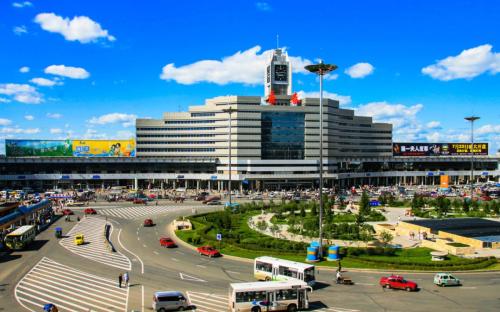City Construction
The city has fully started the large-scale construction and restructure of its infrastructure. To build a modern three-dimensional traffic system, the city is carrying out a comprehensive plan with a balance between the metro and light railway systems, the overpasses and underpasses, the overground and underground traffic systems, the two- and three-dimensional traffic systems, and the main and access roads. In the meanwhile, the city is carrying out a series of moves to enhance its environment and image, and has invested 86.9 billion yuan in total to transform its shantytowns and improved the living conditions of 820 thousand households. Its shantytown transformation project has won the “Model Prize of People’s Residential Environment in China”. Besides, the city has carried out the “Warm House Project” to upgrade the thermal insulation of 38.5 million㎡ residential buildings, improved the living condition of 166 old communities under poor property management, and benefited over three million people.
Population & Ethnic Group
Total Population & Population Distribution
As of 2013, the number of families living in Changchun City amounted to 2,474,784, and the population totaled 7,720,000, including 3,823,596 males and 3,765,325 females, 50.4% and 49.6% of the total population, respectively. The population in districts (Nanguan, Kuancheng, Chaoyang, Erdao, Lvyuan and Shuangyang) reached 3,627,536, accounting for 47.8% of the city’s total population, and that in counties (cities) (Nong’an County, Jiutai City, Yushu City and Dehui City) was 3,961,385, accounting for 52.2% of the total population of the city. Compared with the record in the year of 2009, 23,856 more were registered in 2010, an increase of 3.1‰, but the growth rate saw a drop of 2.2‰ from 2009’s record. Changchun’s population accounted for 27.9% of the total of Jilin Province.
Economy
Vigorous Changchun, a Thriving City of Happiness
Changchun is accelerating its pace to transform and improve as a beneficiary of the National Strategy of Reviving the Old Industrial Bases in the Northeast China. With the National Strategy of Opening and Developing the “Changchun-Jilin-Tumen” Region, the State Council is implementing a new round of policies to revive the Northeast China and offering a new opportunity to stabilize the economic increase, transform the economic structure, stimulate the reforms, and benefit people’s well-being of the city.
Upgrading and Transformation of the Old Industrial Base
The city is vigorously restructuring its industries by strengthening its advantages and overcoming its shortcomings. With automobile, agricultural product processing and railway vehicle as its three pillar industries, the city is establishing world-class industrial bases, and in the meanwhile, actively developing strategic emerging industries. Holding on to the strategy of “keeping a balance between the secondary and tertiary industries”, the city is increasing its economy driven by both of the industries, and giving prominence to private economy, so as to accelerate the upgrading and transformation of the city’s economic development.
Religion
Religion in Changchun City is characterized by a diversity of religious beliefs and practices. Buddhism, Christianity, Catholicism and Islam are the top four in order. Various religious buildings totaling 30 plus can be found in the city. The church at West Wuma Road can hold 2,000 people in just one service. The religious sites open to visitors also include the Catholic Church at West Sidao Street, the Mosque at Changtong Road, the Yuantong Temple in Shuangyang District and Jin’gang Temple in Nong’an County, which can meet the worship or visit demand of visitors. The Huguo Prajna Temple, located in the east of People’s Square, is the largest of its kind in town that is under the key protection of the nation. On the 8th, 18th and 28th of every lunar month April, tens of thousands of people will come to worship. At No. 31, Beijing Road of Jilin City, there is a 2-floor church covering more than 1,000 square meters. The words “Founded on the Rock” on a stone tablet are every eye-catching. Sunday, Wednesday and Friday, especially Easter and Christmas are important days for believers to gather. The church was built in the 17th year of Emperor Guangxu of Qing Dynasty (1891). At No. 3, Songhuajiang Road of Jilin City, there is a mosque. It is a domed tower composed of three parts. The middle part, bell tower, is 42 meters. Whenever the bell rings, its sound can be heard several miles away. In Jilin, there are three mosques that were built one after another in the 2nd year of Emperor Guangxu (1724), and Emperor Qianlong’s 28th and 25th year respectively.

